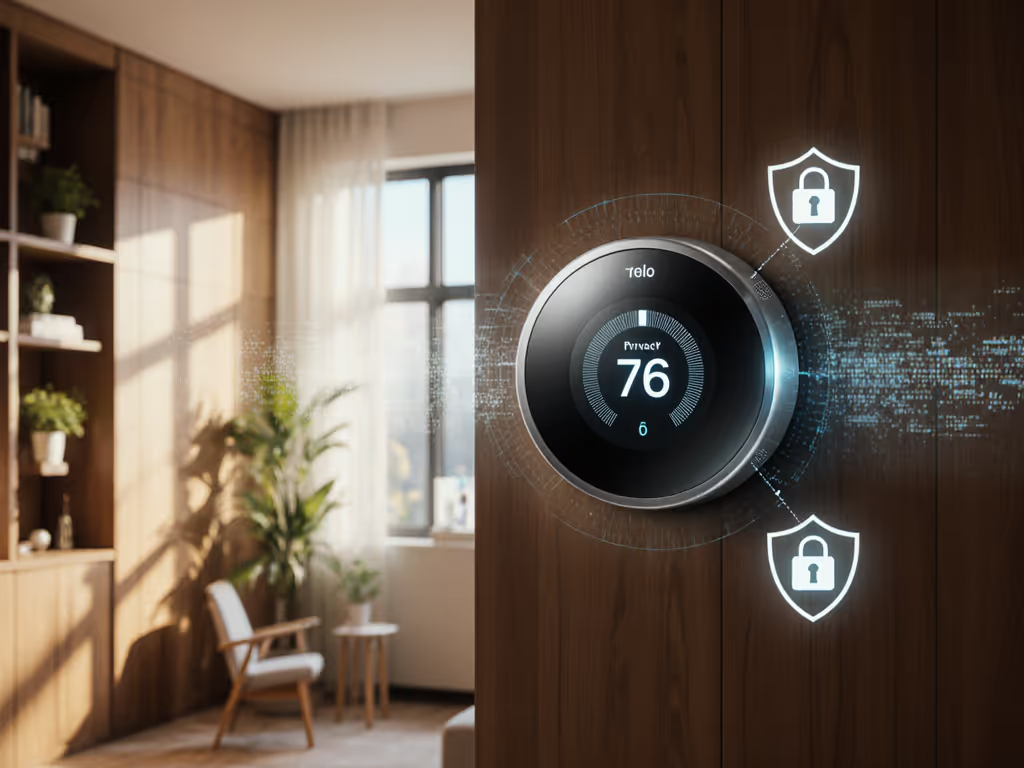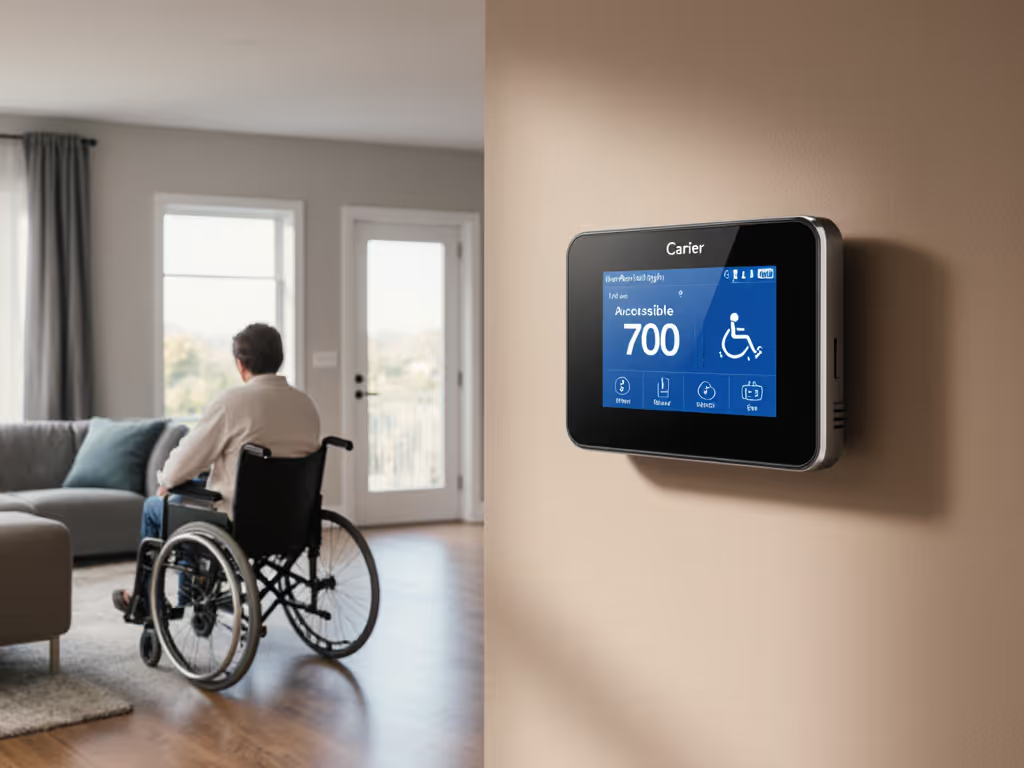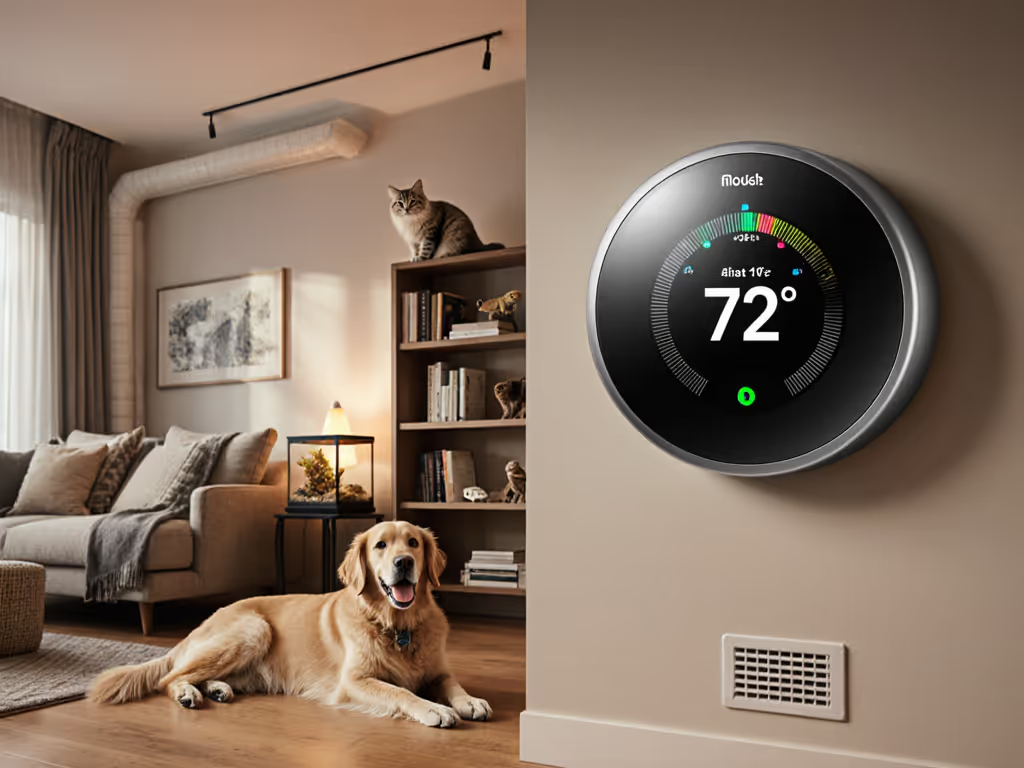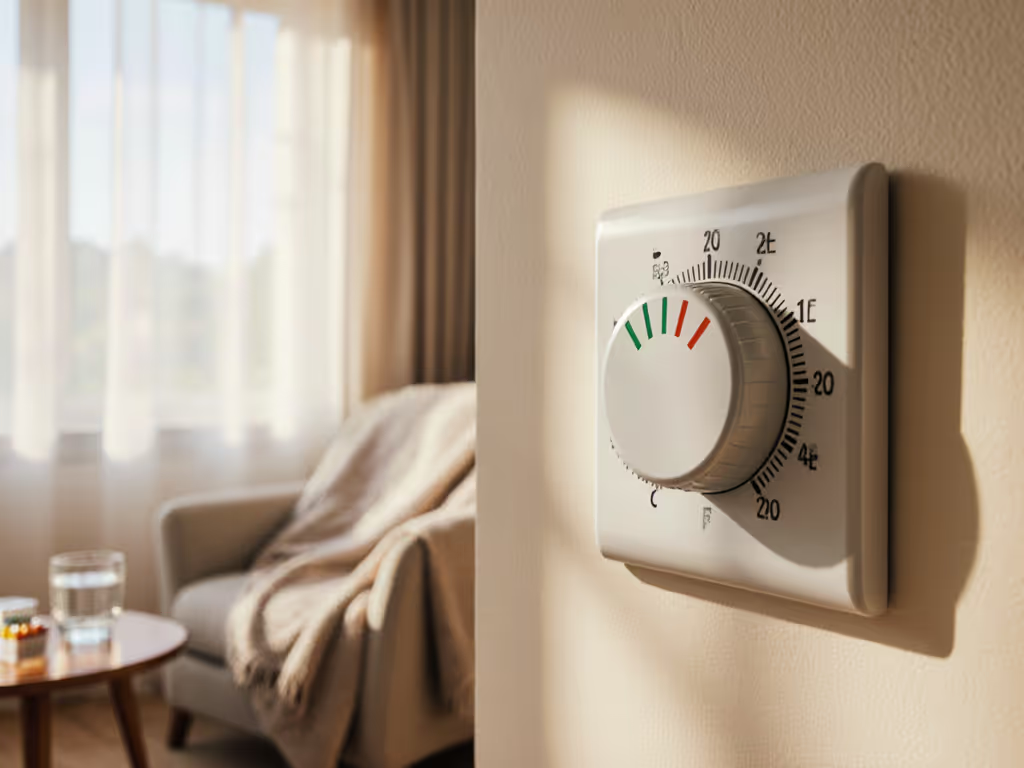
Allergy Relief: Smart Thermostat Air Quality Control
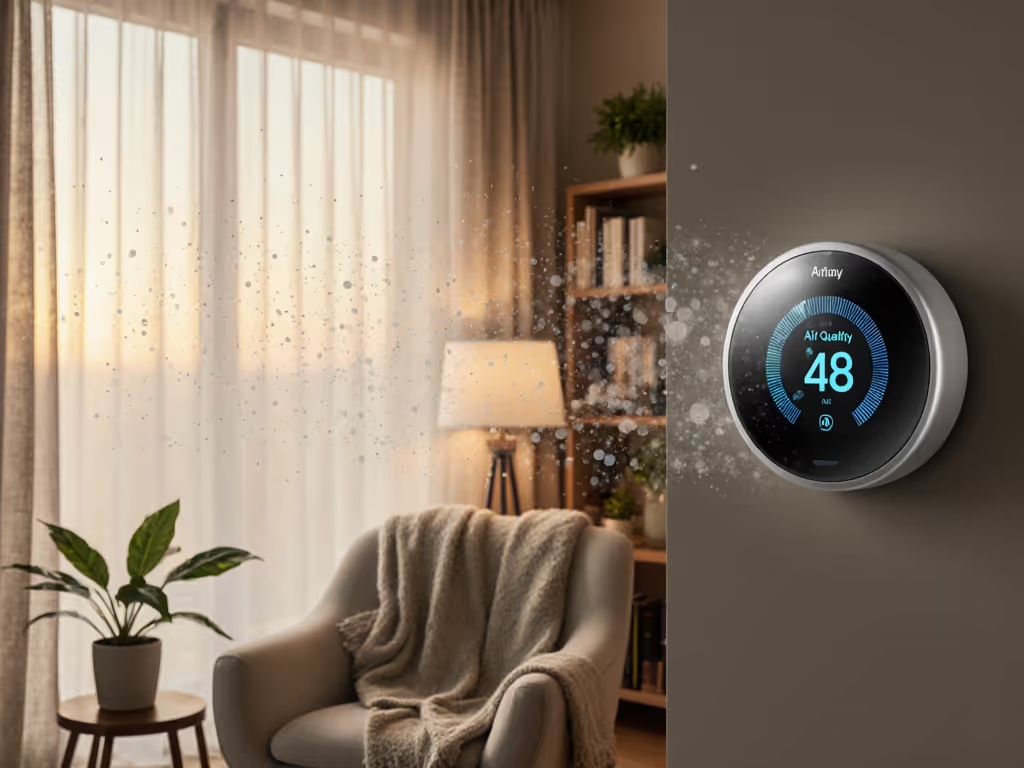
For allergy sufferers, indoor air quality directly impacts daily comfort. Modern smart thermostat air quality systems provide sophisticated monitoring and control, transforming HVAC systems into proactive allergy management tools. These allergy-friendly thermostat solutions detect pollutants, manage humidity, and integrate with purification systems, offering data-driven relief for sensitive individuals.
1. Real-Time Pollution Monitoring and Alerts
Built-in sensors track key airborne irritants:
- Particulate matter (PM2.5): Detects dust, pollen, and pet dander
- Volatile Organic Compounds (VOCs): Identifies emissions from cleaning products or paints
- Carbon dioxide (CO2): Monitors exhaled air buildup in occupied rooms
Devices like the ecobee Smart Thermostat Premium provide instant alerts when pollutant levels exceed thresholds, enabling rapid intervention. For a side-by-side look at notification reliability and mobile controls, see our Ecobee vs Nest app comparison. Note: Because of sensor placement, readings primarily reflect the thermostat's immediate area, not entire homes.
2. Humidity Control for Allergen Suppression
Maintaining 40-60% relative humidity is crucial for allergy management:
| Function | Allergy Impact |
|---|---|
| Dehumidification | Prevents mold/mildew growth in damp climates |
| Humidification | Reduces airborne dust in arid environments |
Systems like ecobee automatically adjust HVAC runtime to maintain ideal humidity, integrating with whole-home humidifiers and dehumidifiers when available. However, standalone thermostats without accessory control may lack precision for severe allergy cases.
3. Air Purifier Integration Strategies
Smart thermostats synchronize purification based on real-time air quality:
- Triggered activation: Automates purifiers when pollutant thresholds are breached
- Occupancy-based operation: Runs purification only during room occupancy to conserve energy
- Ventilation coordination: Opens dampers while activating purifiers during high-pollution events
Case studies show combined systems reduce allergen exposure by 30-45% during peak seasons. To automate occupancy-triggered filtration even when phones come and go, learn how to optimize thermostat geofencing for reliable presence detection. Note: Integration requires compatible equipment, which can create ecosystem lock-in.
4. Ventilation Optimization Techniques
Balanced fresh air introduction is critical:
- Demand-controlled ventilation: Activates air exchange only when CO2 or VOCs spike
- Filter-aware scheduling: Times ventilation cycles to align with MERV 13+ filter upgrades
- Zone-specific management: Prioritizes occupied rooms to minimize outdoor allergen ingress
Utility studies indicate proper ventilation reduces indoor allergen concentrations by 28% on average. Critical reminder: Oversimplified algorithms may over-ventilate during high-pollen days.
5. Compatibility and Installation Realities
Four essential pre-purchase verifications:
- HVAC type confirmation: Heat pumps and multi-stage systems require specific wiring support
- C-wire assessment: Power stability prevents system resets during critical filtration cycles
- Accessory compatibility: Humidifiers and dehumidifiers need dedicated terminals
- Voltage matching: Line-voltage systems (e.g., baseboard heaters) are incompatible with low-voltage stats
DIY installations succeed in 73% of homes with clear wiring guides, though professional calibration is advised for complex systems. Before buying, confirm wiring and system support with our smart thermostat compatibility guide.
6. Utility Program Tradeoffs
Demand response programs offer rebates but require careful evaluation:
| Feature | Allergy Impact |
|---|---|
| Override clarity | Must allow instant exit during high-pollen days |
| Pre-cooling logic | Should prioritize filtration before peak events |
| Post-event recovery | Must not compromise humidity control |
Verify program penalties. Some demand response programs disable air purification during conservation events.
7. Selecting an Allergy-Optimized Model
Evaluate using this framework:
- Sensor validation: Demand third-party accuracy reports for PM2.5 and VOC sensors
- API transparency: Ensure local control remains available during cloud outages
- Upgrade path: Confirm compatibility with future humidification or ERV add-ons
- Data ownership: Review privacy policies for air quality data monetization
Models like certain ecobee units provide verifiable sensor performance for particulate detection, though VOC accuracy varies. For safeguards and configuration tips, see our smart thermostat privacy and security guide.
Smart thermostat air quality systems transform allergy management from reactive to predictive. While limitations exist in sensor range and integration depth, their data-driven approach provides actionable insights for reducing indoor allergen exposure. Prioritize models with transparent calibration data and override reliability for true allergy mitigation.


